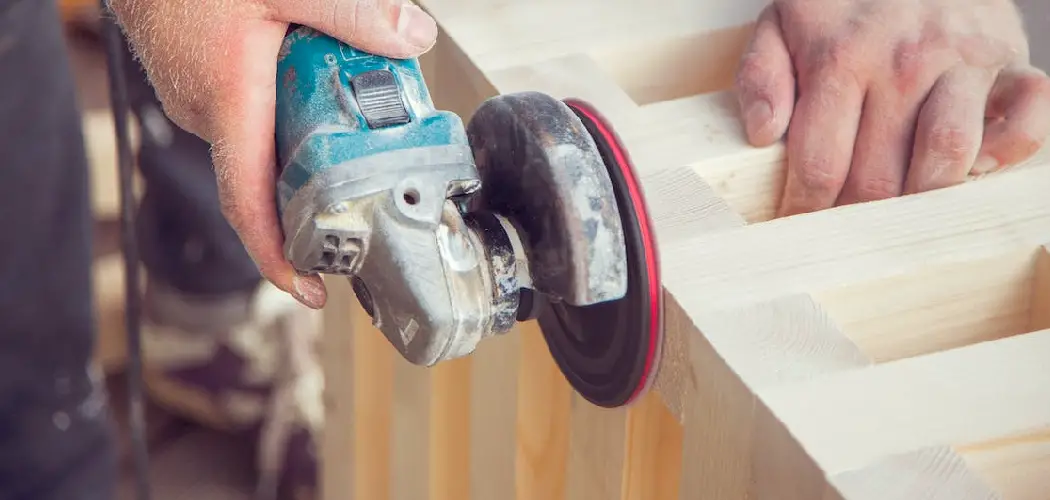An angle grinder is a versatile tool that can be used for various projects, including sanding wood. When using an angle grinder for sanding wood, remember a few things. First, be sure to use an abrasive disk that is designed for use on wood. Second, ensure the disk is installed correctly and firmly attached to the grinder. Third, start with a lower speed setting and gradually increase the speed as needed.
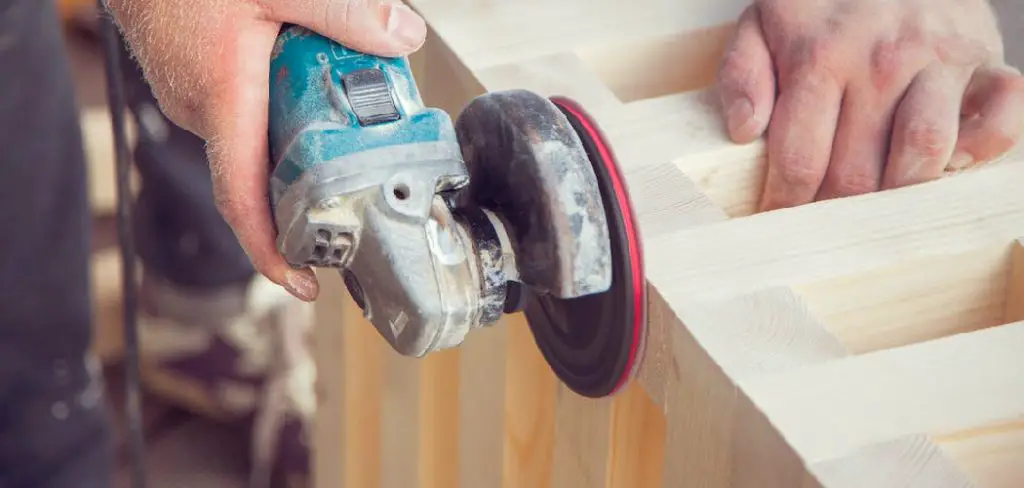
Fourth, use gentle, even strokes when sanding the wood. Fifth, avoid pressing too hard on the grinder, as this can cause damage to the wood. Finally, be sure to clean up any dust or debris after sanding. Following these tips, you can safely and effectively sand wood with an angle grinder. By following the steps and tips, you will know in detail how to use angle grinder for sanding wood.
Materials You Need
- An angle grinder
- Abrasive disc
- Sandpaper
- Dust mask
- Safety goggles
- Gloves
Step-by-Step Processes for How to Use Angle Grinder for Sanding Wood
Step 1: Choose the Correct Abrasive Grit for Your Project
The first step in using an angle grinder for sanding wood is to choose the correct abrasive grit for your project. You’ll want to use a finer grit if you’re looking to achieve a smooth finish and a coarser grit if you’re trying to remove excess material or sand down rough wood.
Step 2: Prepare Your Workspace
Once you’ve selected the right abrasive grit, it’s time to prepare your workspace. You’ll want to ensure you have a clean, flat surface to work on and that your angle grinder is properly equipped with the correct disc.
Step 3: Secure Your Workpiece
Before you start sanding, you’ll need to secure your workpiece. This will help prevent the wood from moving around while you’re working and give you a more even finish.
Once your workspace is prepared, and your workpiece is secured, you can begin adjusting the settings on your angle grinder. You’ll want to start with the speed control, and then you can experiment with different angles and positions until you find what works best for your particular project.
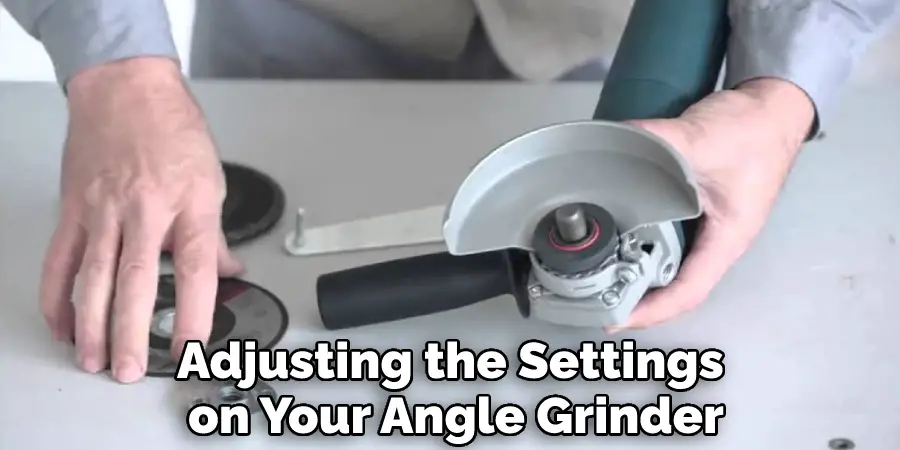
Step 4: Begin Sanding
With your workspace and angle grinder prepared, you’re finally ready to start sanding. Begin by moving the angle grinder across the surface of the wood in a back-and-forth motion.
One of the most important things to remember when sanding wood with an angle grinder is to always sand with the grain. This will help to prevent the wood from becoming damaged or scratched.
Step 5: Use a Slow, Even Motion
When sanding with an angle grinder, it’s important to use a slow, even motion. This will give you the most control over the tool and help prevent mistakes.
Another important tip for using an angle grinder for sanding wood is to avoid pressing too hard. This can damage the wood or cause the angle grinder to slip, so applying gentle pressure is important.
Step 6: Move the Angle Grinder in a Circling Motion
In addition to moving the angle grinder back and forth, you can also try moving it in a circling motion. This can help to give your project a more even finish.
If you want to achieve a different finish, you can try using different abrasive grits. For example, you can use finer grit if you want a smoother finish. Or, if you’re trying to remove excess material, you can use a coarser grit.
Step 7: Repeat the Process
Once you’ve sanded the wood with one grit, you can repeat the process with another grit until you’re happy with the results. Always sand with the grain and use a slow, even motion.
You’ll need to change the angle grinder disc if you’re using a different abrasive grit. You can do this by loosening the disc nut and removing the old one. To install the new disc, simply reverse the process.
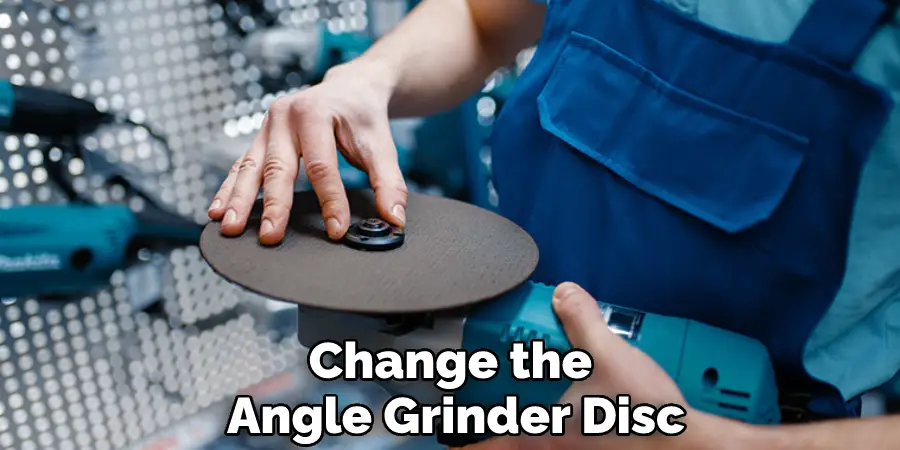
Step 8: Clean Up Your Workspace
When you’re finished sanding, cleaning your workspace is important. This includes removing any dust or debris that may have accumulated during the process.
Once you’ve cleaned up your workspace, you can take a look at your workpiece to see how it looks. If you’re satisfied with the results, you’re finished! If not, you can always go back and sand some more.
Safety Tips for Using Angle Grinder for Sanding Wood
- Always wear safety glasses when using an angle grinder. Use a dust mask to avoid breathing in wood dust.
- Wear ear protection to avoid damage to your hearing. Make sure the area around you is clear of people and pets before using the angle grinder.
- Do not use the angle grinder in wet conditions. Do not use the angle grinder on metal.
- Use the correct wheel for the material you are working on. Inspect the wheel before use to ensure it is not damaged.
- Secure the workpiece before starting to grind. Do not force the angle grinder.
- Use both hands to grip the tool. Keep a firm grip on the angle grinder at all times.
- Be aware of flying sparks when using the angle grinder. Turn off the angle grinder before removing it from the workpiece.
- Store the angle grinder in a safe place when not in use.
Always follow these safety tips when using an angle grinder to sand wood to avoid injury.
How Do You Sand Evenly With an Angle Grinder?
If you’re Sanding a flat surface like a tabletop, the best way to ensure even results is to use a circular motion with your angle grinder. Begin in the middle of the surface and work your way outwards in a spiral pattern. Make sure to keep the grinder moving at all times to avoid damaging the wood.
If you’re working on a curved surface, like the edge of a piece of furniture, you’ll need to use a back-and-forth motion to sand the surface evenly. Again, be sure to keep the grinder moving to avoid damaging the wood.
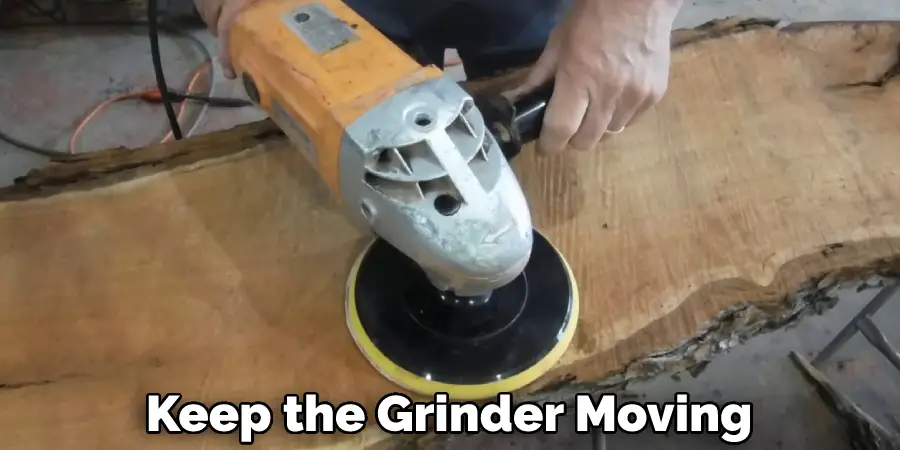
Is It Necessary to Call Any Professional to Use Angle Grinder for Sanding Wood?
Many people think it is necessary to call any professional to use an angle grinder to sand wood. However, this is not the case, and you can do these tasks by yourself if you know how to use this machine properly. The most important thing that you need to keep in mind is always to wear protective gear such as gloves and goggles. This will protect you from the flying debris that might come off while you are using the machine.
In addition, you should also make sure that the area where you will be working is well-ventilated to avoid inhaling the dust particles. When using the machine, start with a lower speed and gradually increase it as needed. You should also hold the grinder at a 90-degree angle while sanding the wood surface. Do not apply too much pressure, as this might damage the wood. Lastly, once you are done sanding, make sure to clean up the area properly to remove all the debris.
Can You Use an Angle Grinder to Remove Paint?
Yes, you can use an angle grinder to remove paint from wood. However, it’s important to be careful not to damage the wood surface. Make sure to use a low-speed setting and a coarse abrasive disc. Begin in a small area and work your way outwards. Always sand with the grain to avoid damaging the wood.
What’s the Best Way to Clean Up After Using an Angle Grinder?
Once you’re finished using the angle grinder, cleaning up your workspace is important. This includes removing any dust or debris that may have accumulated during the process. You can use a shop vac to suck up any large particles. You can use a damp cloth to wipe down the surface for smaller particles. Once you’ve cleaned up your workspace, you can take a look at your workpiece to see how it looks.
Can Grinders Be Used for Sanding?
You may be tempted to use your angle grinder for sanding wood, but this is not recommended. The high speed of the grinder can damage the wood, leaving it with a rough surface. In addition, the grinding wheel can cause burns on the wood.
If you must use your angle grinder for sanding wood, be sure to use a grinding wheel designed for that purpose. Start with a coarse-grit wheel and move to a finer-grit wheel as needed. Be sure to keep the grinder moving to avoid damaging the wood. When you’re finished, vacuum up any debris and apply a clean coat of paint or varnish to protect the wood.
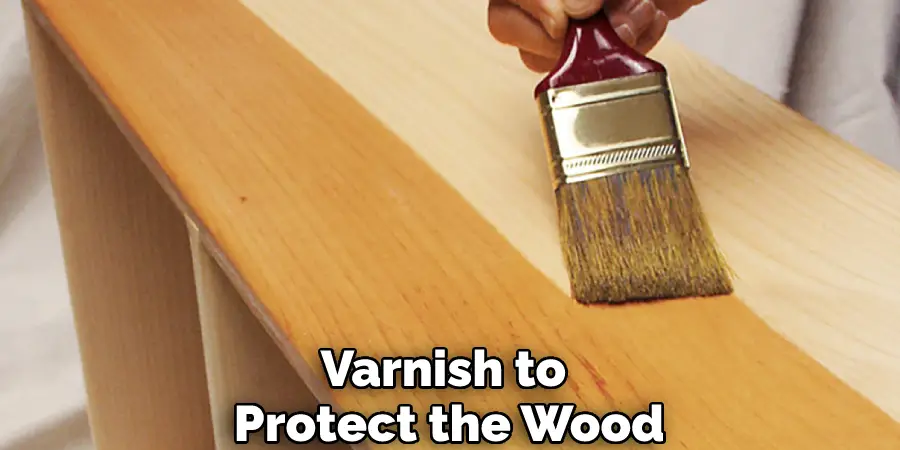
Conclusion
An angle grinder is a useful tool for sanding wood. You can use it to remove paint, stains, or varnish from your wooden surfaces. It’s important to be careful when using an angle grinder, as the spinning disc can cause serious injuries if you’re not careful. Ensure you have the proper safety equipment and follow all safety instructions before using an angle grinder on your woodworking projects.
With a little practice, you’ll be able to get great results using an angle grinder for sanding wood. I hope this article has been beneficial for learning how to use angle grinder for sanding wood. And always remember to wear gloves, goggles, and a face mask to protect yourself from flying debris.

